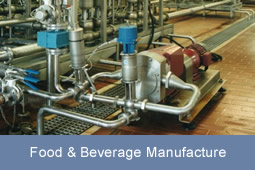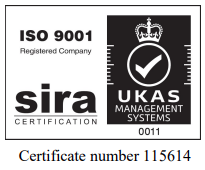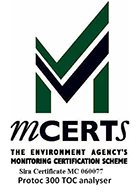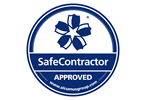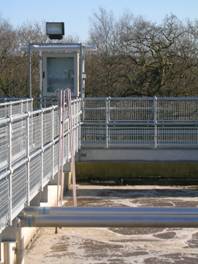 The Cross Hands WwTW has recently been revamped to increase it's capacity and to completely automate the treatment process. The upgrade will accommodate future industrial expansion and allow the site to maintain compliance with strict discharge consents enforced by the Environment Agency.
The Cross Hands WwTW has recently been revamped to increase it's capacity and to completely automate the treatment process. The upgrade will accommodate future industrial expansion and allow the site to maintain compliance with strict discharge consents enforced by the Environment Agency.
The site uses a conventional activated sludge process with diffused air to promote biological removal of ammoniacal-nitrogen. The plant design allows for the incoming flow to be split between two aeration lanes which are both individually controlled.
The selection of instrumentation is critical to the successful operation and control of the treatment process. The contractor was guided by Dwr Cymru Welsh Water who had previously installed instrumentation from PPM at the Cardigan Bay project for the measurement of Dissolved Oxygen and MLSS.
These two parameters are used to automate the biological treatment to ensure the correct concentrations of dissolved oxygen and activated sludge is maintained within the aeration basin.
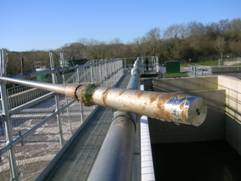 Since installation during February 2006, the PPM monitors have required the absolute minimum of maintenance. The Dissolved Oxygen sensor has a porous Teflon membrane which minimises biological fouling and when installed below 0.50m depth typically does not require physical cleaning. The reference system also maintains calibration so user intervention is minimal.
Since installation during February 2006, the PPM monitors have required the absolute minimum of maintenance. The Dissolved Oxygen sensor has a porous Teflon membrane which minimises biological fouling and when installed below 0.50m depth typically does not require physical cleaning. The reference system also maintains calibration so user intervention is minimal.
Similarly the MLSS sensor is also low maintenance. The Visolid sensor uses continuous ultrasonic cleaning to keep the optics clean. The provision to calibrate the sensor at multiple points (up to seven different sludge concentrations may be entered) provides for a much more accurate determination of sludge concentration. The initial calibration is typically performed using just three points to obtain a representative calibration curve. Subsequently the measurement performance can be easily checked against a reference meter and a correction factor can be simply applied if required.
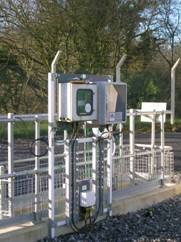 The continuous measurement of ammonium is also a critical parameter to demonstrate the treatment process is working properly. The ammolyt ammonium monitor was installed with automatic compressed air cleaning and is located on the final effluent discharge. The submersible probe provides a direct measurement of effluent quality and is completely reagentless.
The continuous measurement of ammonium is also a critical parameter to demonstrate the treatment process is working properly. The ammolyt ammonium monitor was installed with automatic compressed air cleaning and is located on the final effluent discharge. The submersible probe provides a direct measurement of effluent quality and is completely reagentless.
Dwr Cymru have recently up graded the system to the ammolyt plus technology which is a second generation product offering many enhanced features. Once commissioned the system is extremely stable and does not require subsequent calibration thus reducing maintenance to an absolute minimum.
The measurement of sludge blanket within the two separate clarifiers has also proved successful. The ENV100 monitors use ultrasonic technology to continuously profile the depth to the sludge blanket and provide forward warning well before critical conditions are breached. Should the sludge level rise, then the clarifiers can be programmed to automatically decant preventing sludge carry over which can affect final effluent quality. The monitors are supplied with a small compressor unit which regularly is used to clean the submerged ultrasonic head and remove biological fouling.
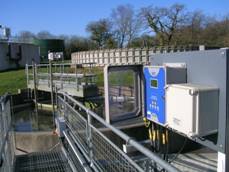 The Cross Hands WwTW site is a good example of how on-line instrumentation can be successfully installed to provide continuous process measurement and allow proactive management of the individual treatment processes. Where the correct instrumentation is selected it can positively contribute to process optimisation and in doing so improve effluent quality and reduce operational costs.
The Cross Hands WwTW site is a good example of how on-line instrumentation can be successfully installed to provide continuous process measurement and allow proactive management of the individual treatment processes. Where the correct instrumentation is selected it can positively contribute to process optimisation and in doing so improve effluent quality and reduce operational costs.
For further information on how PPM can support your instrumentation requirement please contact:
Steven Tuck
Pollution & Process Monitoring Ltd
Tel: 01732 882044
Fax: 01732 780190
Email: s.tuck@pollution-ppm.co.uk


